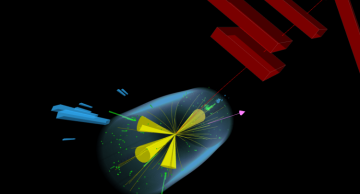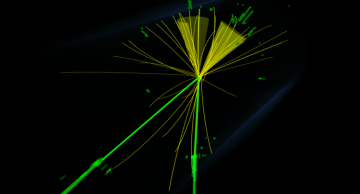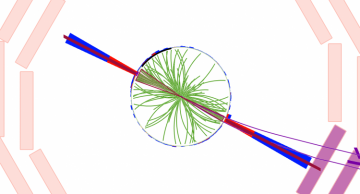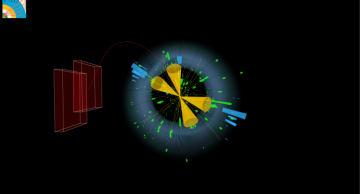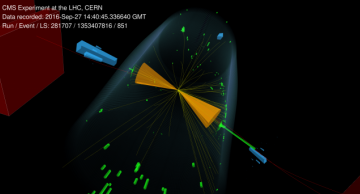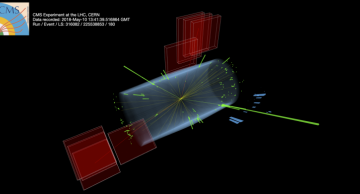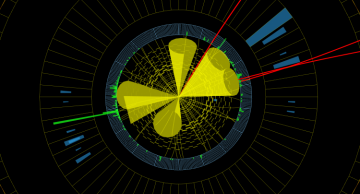The standard model of particle physics is our current best theory to describe the most basic building blocks of the universe, the elementary particles, and the interactions among them. At the heart of the standard model is a hypothesis describing…
After the Higgs boson discovery in the year 2012, the standard model of particle physics offers a complete and consistent description of elementary particle interactions that, despite the many attempts, has not been falsified by experimental…
As physicists seek the elusive particles that may reveal a new understanding of the universe’s inner workings, one intriguing possibility is the conceivable existence of new particles that live in a shadow universe, called the “dark sector.” The…
A recent result from CMS searches for long-lived particles through the so-called “Higgs portal” in ways never done before.
For about a decade now the CMS experiment at the CERN LHC has collected and analyzed data from hadron collisions, mainly…
This year marked the ninth anniversary of the discovery of the Higgs boson; the Standard Model particle linked to the mystery of creating the mass of all the other fundamental particles through the so-called Higgs mechanism. While a single Higgs…
Could you imagine what the dark part of the universe is like?
The Standard Model of Particle Physics explains matter at the subatomic level and the related phenomena such as interactions and forces between the subatomic particles. Still, we…
The interaction of the Higgs boson with its own field leads to its mass generation. Since the Higgs boson mass has already been measured, the study of the Higgs pair production at the LHC reveals directly the strength of the Higgs self coupling λHHH…
High-energy particle accelerators are unique tools to study the structure of matter at the shortest distances. The most powerful accelerator today is the CERN Large Hadron Collider (LHC) that has so far collided beams of protons up to center-of-mass…
For the first time, CMS physicists extract the fundamental parameters of QCD together with constraints on the New Physics.
Any tiny failure of the Standard Model to explain data behaviour is a possible window for the New Physics.…
The most powerful particle collider in the world, the Large Hadron Collider (LHC), was built in the 27 km tunnel originally excavated for the highest energy electron-positron collider ever built, LEP. As an extraordinarily sensitive machine, LEP was…
Using the golden decay channel to understand the production of the Higgs boson
The standard model of particle physics is currently the best way to describe interactions of fundamental particles that make up our Universe. It has been tested over many…
What does the decay of a bottom quark look like?
Fragmentation, also known as hadronization, is when particles that contain quarks or gluons create other particles via the strong interaction. The fragmentation process cannot be exactly…


